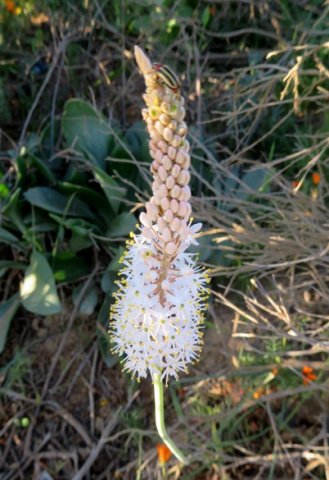Bulbinella

Author: Ivan Lätti
Photographer: Thabo Maphisa
Bulbinella is an Asphodelaceae genus of hairless geophytes. These perennials grow from fibre-covered rhizomes with wiry or swollen roots.
The annual shoots are usually unbranched, mostly shorter than 1 m. In some species they are surrounded at the base by fibrous sheaths, the leaf bases, as the tuft of few to many leaves of these plants grow here. The often soft, distichous leaves are not quite succulent. They are either thread-like, linear, channelled or triangular in cross-section and tapering to their tips. Some species have larger lower leaves than upper ones.
The inflorescence is a simple, many-flowered raceme. It may be cylindrical, conical or somewhat corymb-shaped and densely flowered or lax. The perianths are star-shaped, their segments free or attached to each other at the base. The oblong segments may be orange, yellow or white to cream-coloured, the flowers lasting long.
The stamens emerge from below the ovary. They are thread-like, without the bearded filaments of the Bulbine genus. The anthers are small. The superior ovary is nearly globose to ovoid, the style cylindrical and the stigma tiny.
The fruit capsule is nearly globose, still topped by the persistent style. The triangular, winged seeds are black.
There are 22 Bulbinella species, 17 of which occur in southern Africa (and 6 in New Zealand).
The plant in picture is Bulbinella cauda-felis flowering in the Biedouw Valley (Leistner, (Ed.), 2000; Vlok and Schutte-Vlok, 2015; Manning, 2007).

